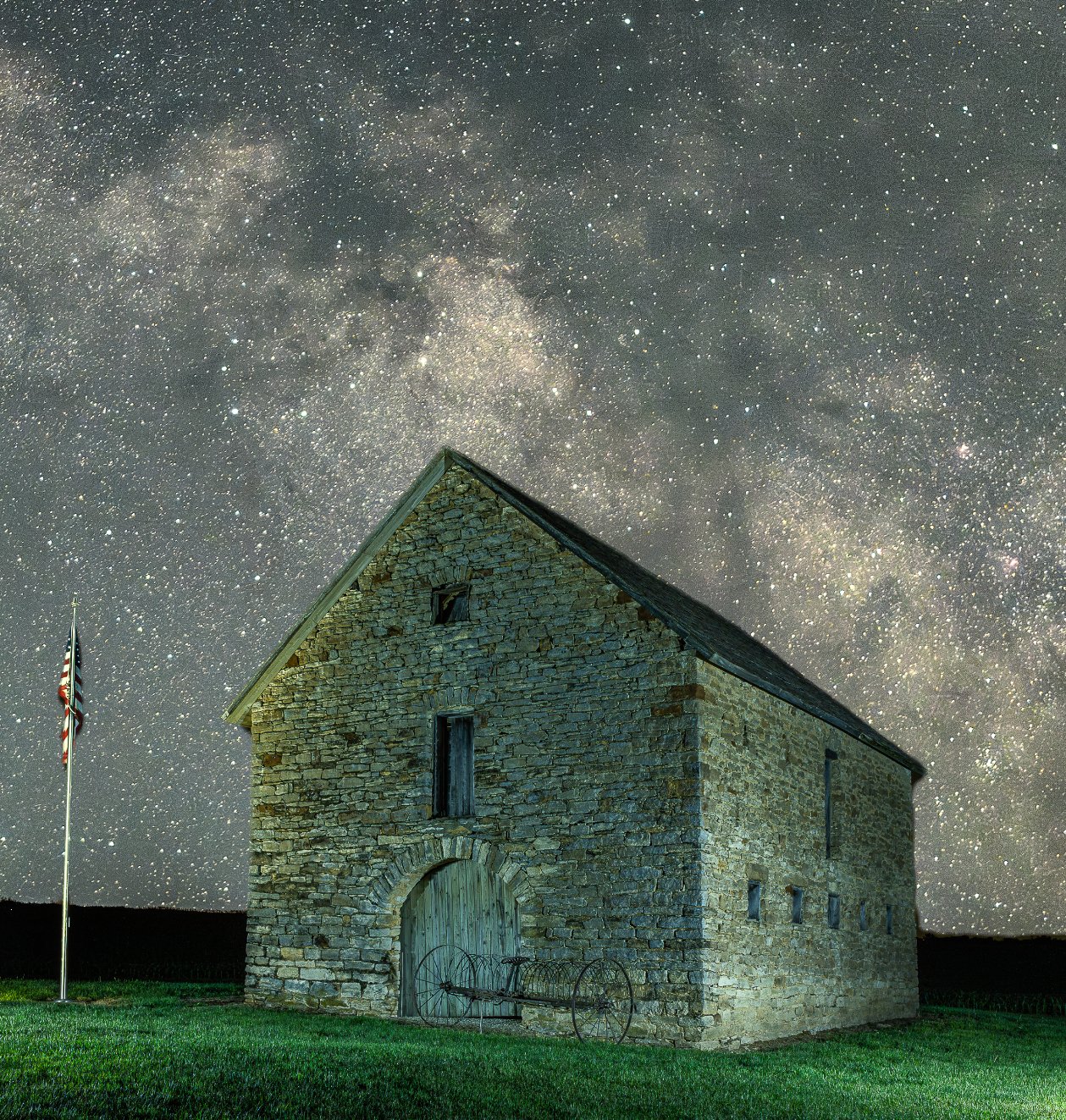The John Dickenson Barn
The Story Behind the Camera
During the early 1850’s, America was drawing battle lines within itself. Civil unrest swelled toward civil war. New land was opening in Kansas territory. John and Lavina Dickenson moved from Lee County, Virginia to this place near Robinson in east Kansas. Land was being offered for a dollar an acre and each family was allowed a thousand acres of land, most of which was covered in prairie grass.
The Dickenson family traveled into Kansas by oxen and wagon. They built a sod house across from this old stone barn. They taught school in the winter at a prairie school to pay for the land. John and his older sons decided to plant wheat and oats. They would need a place to store the grain and hay for the cattle. They built a stone barn.
The father and sons hauled river rock by wagon from near Atchinson. They put the rock together with mortar. The walls are two-feet thick, and the wood beams came for the limited nearby timber. Trees were hand hewed and put together with wooden pegs. The lower level was used for horses and mules. The second level was for grain and hay, and the third level was for corn that would be used as seed for the next year. Ventilation openings were used in the bins where the grain was stored.
John and Lavina lived here for the rest of their lives. They were buried in the Robinson Cemetery. The farm was passed down to their descendants until 1979. The barn still stands as a monument of the work of John Dickenson and his sons. Construction began in 1852 and was completed in 1861, the year of Kansas’ statehood.
Since 1979, the Tietjens’ family has owned the farm. They restored this barn to honor its history. In 1981, a new roof replaced the damage from a tornado in late 1980. Today, this beautiful historic barn attracts the interest of photographers, artists, travelers, and lovers of the history of frontier life on the Plains.
Geek Speak
This proved to be a challenging photograph. Clear weather had been forecasted. However, smoke from Canadian wildfires filled the upper atmosphere. Stars were barely visible through the haze in the sky. Still, I drove 4 hours to the site of this old barn.
Preparing for a single exposure, I setup the tripod along the northwest corner of the property. The tripod legs were spread out to create a near flat, but stable platform. This permitted a high angle composition to capture as much sky as possible.
With a Viltrox 27mm, f/1.2 prime lens mounted to my Sony a6700 camera, the settings included a 15 second shutter speed, aperture f/5.6, and ISO 800. The increased shutter speed was to permit as much light to come through the smoky sky as possible. The long shutter speed risked stars to be distorted by the earth’s rotation. However, I decided to take that risk. I had to tighten the aperture and decrease the ISO to prevent the highlights from blowing out the image.
With these camera settings, I took several photos from the same camera position. This allowed me to “light paint” the barn from each side. It also took advantage of the ever-changing atmospheric smoke to attempt to get the best exposure of the stars. In the end, I was satisfied with the results. Like many other places, I hope to return to the Dickenson Barn on a clear night and get more photos of this historic icon of Kansas agriculture.
